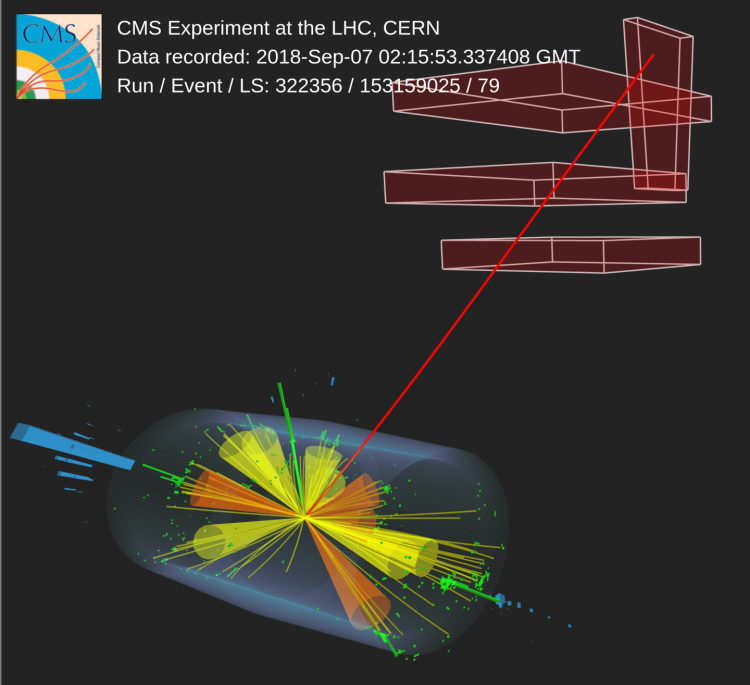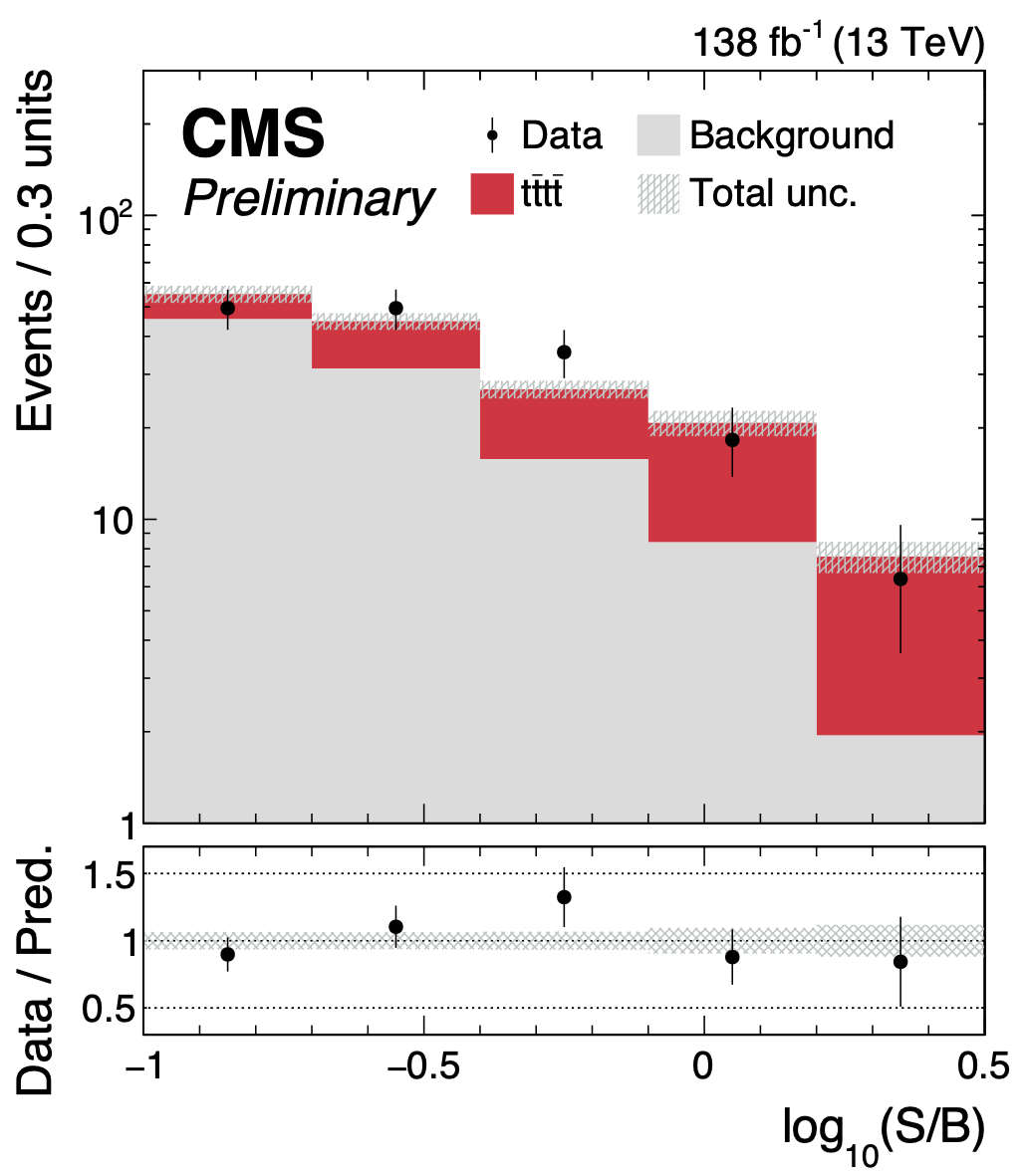
CMS observed the simultaneous production of four top quarks, one of the rarest physics processes ever observed at the LHC, opening the door to detailed searches for physics beyond the Standard Model (SM).
Ever since its discovery at the Tevatron, in 1995, the top quark has received much attention from particle physicists. The much larger collision energy and instantaneous luminosity of the LHC (sometimes nicknamed “top quark factory”) allowed top production studies to enter a new era of precision physics. Between 2016 and 2018 (LHC Run 2), more than 60 million top quark-antiquark pairs were produced by the LHC, inside the CMS detector, sometimes in association with the production of other particles, such as the Higgs boson. The large event samples collected by CMS led to a series of diverse and precise measurements, both regarding single-top and top-antitop pair production. This is a truly remarkable accomplishment, considering that the top quark, a fundamental particle like those that constitute the proton, is more than 170 times heavier than the proton.
Of course, the production of four top quarks (i.e., two quark-antiquark pairs) in a single proton-proton collision is something much more exceptional, happening only once for every 60-70 thousand top pairs produced. In the whole Run 2 period, the LHC produced only around 2000 such events. It is therefore an outstanding scientific achievement, for the CMS Collaboration, to have observed a four-top quark signal with a significance that exceeds the famous 5 sigma threshold used by physicists to declare that a new discovery has been made.
This experimental milestone could only be achieved thanks to several major improvements that the CMS physicists have made over several years, in particular in the areas of data reconstruction and detector calibration, so as to achieve a very detailed understanding of the detector and its operating conditions. This improved information was used in the “legacy reprocessing” of the Run 2 data, leading to more accurate “physics objects”. The use of state-of-the-art machine learning techniques has also been crucial to reach measurements with better resolution, higher signal efficiencies, and lower background contaminations (for electrons, muons, b-tagged jets, etc.).
Figure 1: A four-top event candidate. Two W bosons decayed to leptons (an electron in green and a muon in red) and neutrinos, while the other two decayed to quarks that lead to jets (showers of strongly interacting particles). The jets identified as originating from b quarks are highlighted in orange. The missing transverse energy from the neutrinos is represented by the magenta line. You can view (zoom/rotate) the interactive event display on this separate page.
All these improvements are particularly important for the study of the four-top events, given the exceptional complexity of the corresponding final states: each of the four quarks decays to b quark and a W boson, which subsequently produce a b-jet plus either a charged lepton and a neutrino or a quark-pair (i.e., more jets). Figure 1 displays a prime candidate of a four-top event and illustrates the high complexity of such events. The new result is the outcome of a very careful analysis of the Run 2 data, in various event categories (final-state configurations), with two leptons with the same electric charge or three and four leptons (electrons or muons). Identifying the multiple b-quark jets and the leptons with the highest possible accuracy was one of the main challenges of the measurement. The measured and predicted distributions of candidate events that satisfy the final selection criteria are shown in Fig. 2, as a function of the probability that the event corresponds indeed to a collision where four top quarks are produced.

Figure 2: Comparison of the number of observed (points) and predicted (histograms) events after the final analysis selection. Events are sorted by the expected significance value (i.e., the signal-to-background ratio).
The final result is that CMS observed the four-top signal with a statistical significance of 5.5 standard deviations (the expected significance being 4.9 standard deviations). The corresponding production cross-section is 17.9 fb, with relative statistical (systematic) uncertainties of around 20% (13%). Within the present uncertainties, the measured value is consistent with the SM prediction, 13.4 fb (a value with a precision of around 10%). With more data, we will be able to study this process in greater detail, compare its features to what is predicted by theoretical calculations, and use it to probe contributions from new physics processes predicted in many extensions of the standard model. These results have paved the way for a series of follow-up measurements.
Read more about these results:
- CMS Physics Analysis Summary Observation of four top quark production in proton-proton collisions at
-
@CMSExperiment on social media: facebook - twitter - instagram
- Do you like these briefings and want to get an email notification when there is a new one? Subscribe here

